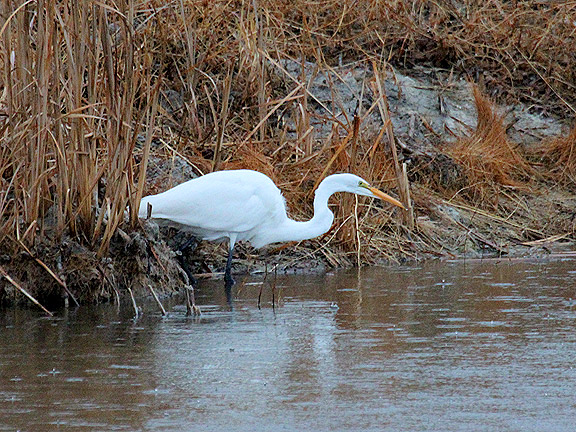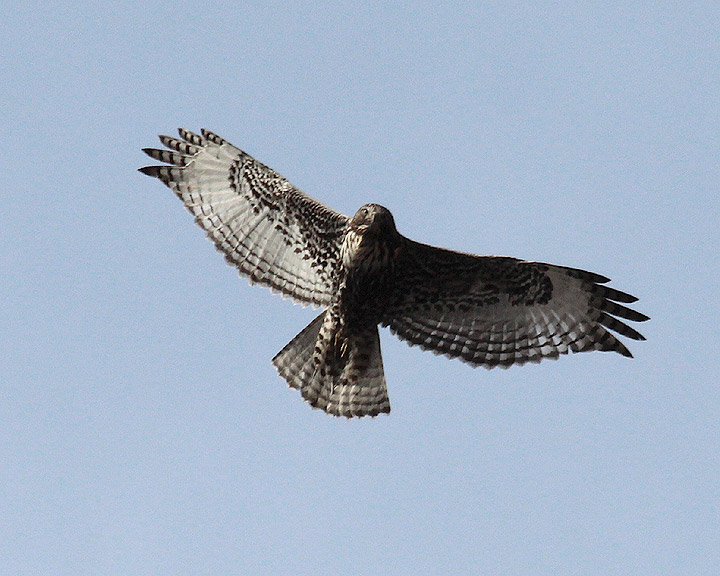 Fish Springs at sunrise
Fish Springs at sunrise
Fish Springs is a beautiful, yet harsh environment; it's a series of
springs nestled in between the Dugway and Deep Creek mountain ranges.
It's a 4 hour, desolate drive out there. There is no cell service, and
weird things happen along the Pony Express road. The drive out can
often be bland, but if you look hard enough, it's possible to see wild
horses, antelope and a Prairie Falcon or two.
Jeff, Brittany Badger(Ingwell) and I went out to Fish Springs for the
New Year's weekend to take place in their annual CBC. Brian Allen, the
NWR manager was nice enough to let us spend two nights in the bunkhouse
before and after the count. This year we had very few participants, I'm
guessing most didn't want to make the long drive on a holiday weekend.

Me, Brittany, Jeff Bilsky
The night before the count, the three of us went out on the refuge for a
little owling. There is a picnic area with a few majestic cottonwoods,
and that's where we decided to call for owls. It was a crisp night,
and the leafless cottonwood skeletons towered over us, the only barrier
between us and the luminous stars (sometimes it's good to get out of the
city lights). After five minutes of inactivity, we decided to pack it
up and move on. As we were leaving, we heard two very loud calls,
saying "who's awake? Me toooooooooo." We bailed out of the car for the
second time, and two silhouettes stood atop the cottonwoods. A pair of
Great Horned Owls serenaded each other for five minutes or so, then
flew away together.
The count started at 9 AM the next morning. Immediately upon leaving
the bunkhouse we spotted a mixed flock of Dark-Eyed Juncos and American
Tree Sparrows. A moment after that, Jeff refound a Townsend's Solitaire
that we had spotted the day before. Our morning was off to a good
start.
We walked over to the NWR office for some logistics before the count.
Brian Allen, the refuge manager gave us our assignments, and we were
off. Just outside the office, we spotted another mixed flock; this one
contained more Tree Sparrows, Juncos, a Spotted Towhee, and a Robin.
Before birding the refuge, Jeff, Brittany and I birded just beyond the
refuge gates in a spot where I have often found Sage Sparrows. We were
lucky enough to find the only four Sage Sparrows of the count, and one
of them gave us great looks. The Sage Sparrow is a beautiful bird with a
very memorable song, so I am always excited to see them.
The birding on the refuge was a little slow (from what I remember in
years past), but we did pick up some good birds. A Great Egret flew
around our car for five minutes or so, we ran into an Eared Grebe, and
saw a good sized flock of Tundra Swans. I was quite disappointed
because the Fish Springs count is one of the few spots I see American
Bittern; this year I saw none.

I think I was scoping a group of ducks
After lunch, we met up with the other team (Valerie Frokjer and Nathan
Darnell), and we headed down to some of the southern springs. We got
out to chat at one of the springs, and as Valerie was walking towards
the phragmites, a couple hundred birds flushed out. A group of ducks
headed to the left, and 32 Black-Crowned Night-Herons headed to the
right. I didn't ID the ducks because I was too busy looking at the
Night-Herons; it was one of the bigger groupings of that species that I
have ever seen. Night-Herons are a little beautiful and a little
awkward in flight; Jeff made a good observation when he said that they
fly a little bit like owls.
After that, the day ended with the great duck flush of Fish Springs (I'm
not going to explain this one; you have to be there to experience it);
the teams picked up a few duck species that we didn't get previously on
the count.
It was a pretty good day. The count had 49 species, and our team had 34 species for the day.
We had a great time. The scenery is majestic, the birds are great, and
it's always good to see our old friend, Jay Banta. The Fish Springs
count is an annual tradition for me, and I always look forward to it. I
suggest that every Utah birder does this count at least once in their
life.
Carl
Labels: bird counts, CBC, Juab County














































